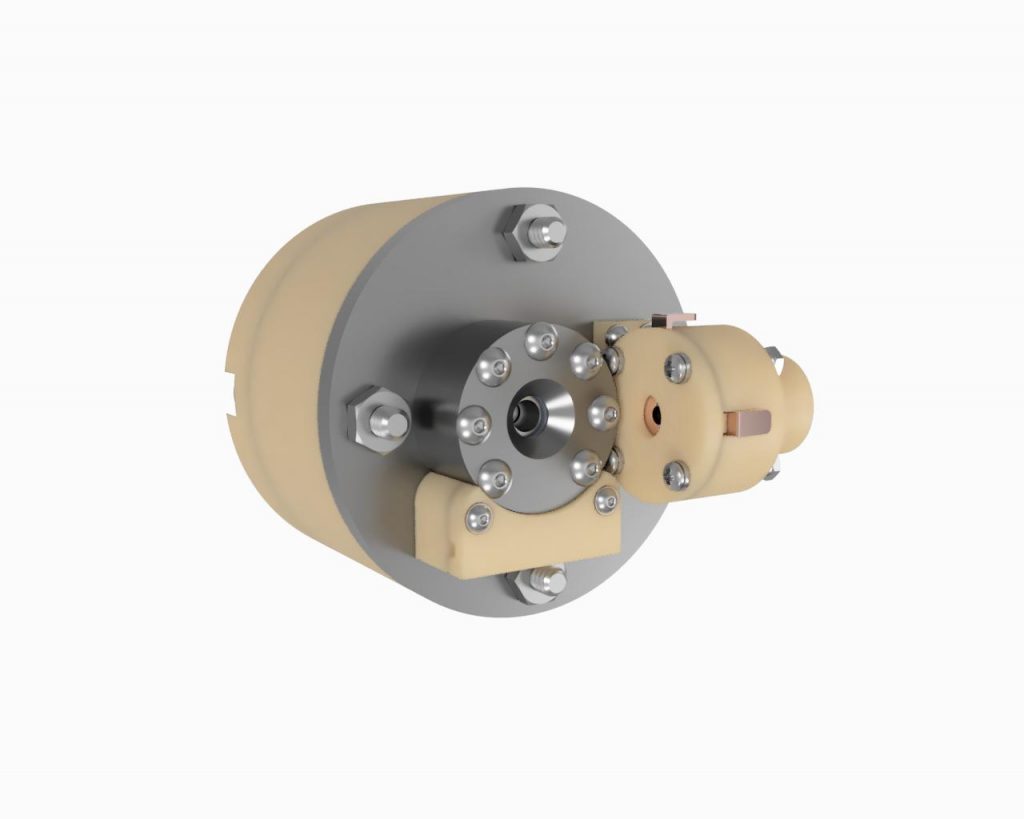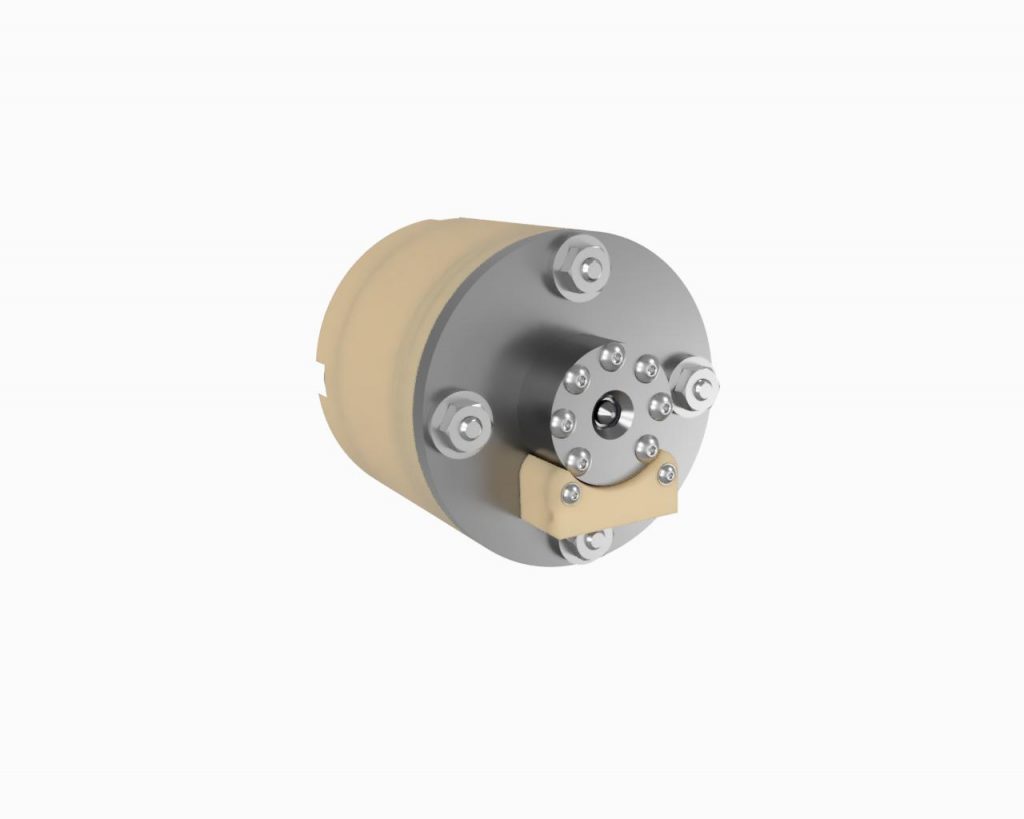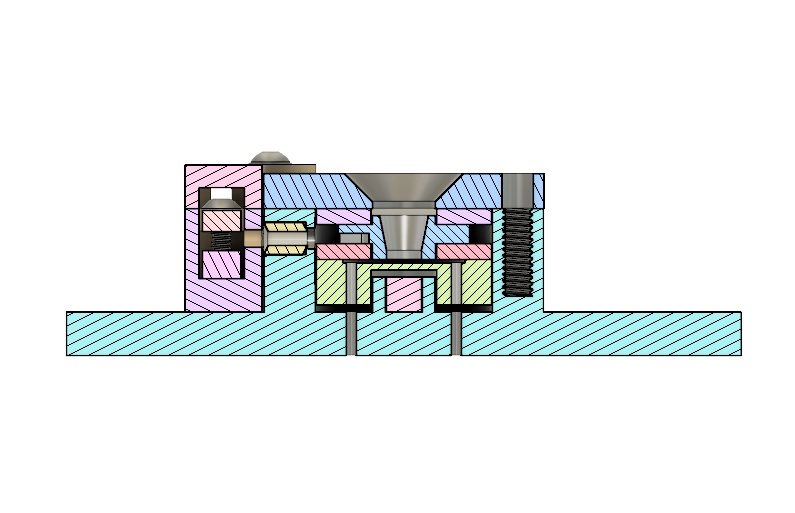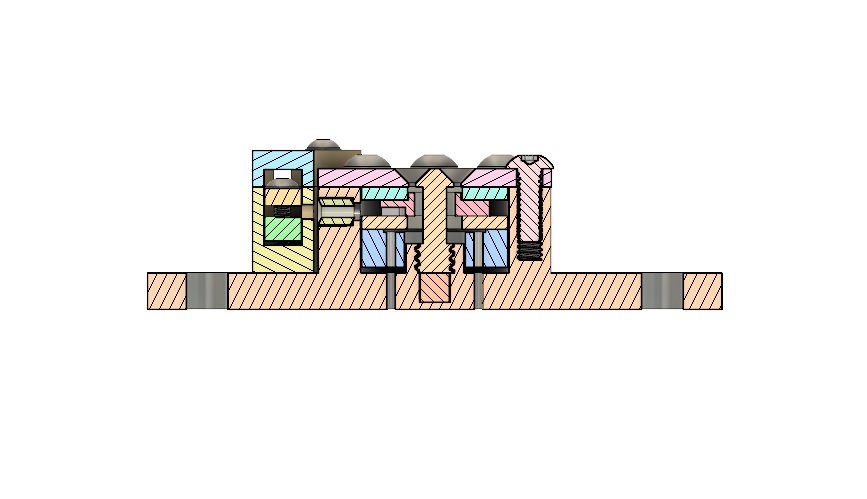I have started a more in-depth analysis to better predict the expected performance of the EHT1 Micro End-Hall Thruster and AHT1 Micro Anode-layer Hall Thruster. Looking at the numbers and literature, there are some very interesting conclusions that can be drawn about each.
First, let’s review the EHT1. I have been having a lot of difficulties locating any papers on End-Hall thrusters. In fact, I have only come across one back in the 90s on an End-Hall, which turned out to actually be more of a hybrid between End-Hall and cylindrical (see footnote 1). A picture of the thruster can be seen HERE.
For those of you who are not familiar with the tech, End-Hall is a major gridless ion source used extensively in ion beam processing. It is actually well optimized for surface processing, having wide divergence, wide energy distribution, and is very simple and rugged. However, it is exactly these key properties that is probably why literally no one uses them for thrusters (except perhaps myself in my approach and stubbornness, for reasons I will elaborate on later). Beam conversion and beam divergence are the two major losses with this tech
The biggest inefficiency is discharge current to beam current conversion. Stationary layer and anode layer can achieve 80-90% conversion efficiency. However, End-Hall only achieves about 20-30% on average. And for any ion thruster, whether gridded ion or Hall, thrust scales proportionally with beam current. So if you have a 100mA discharge supply, where stationary/anode layer may see 80-90mA of that as beam, an equivalent end-Hall will only see maybe 20-30mA. That already drops the thrust-to-power by a factor of 3-4 times (all things being equal), which is a pretty significant amount.
Next we have beam divergence, which is typically measured half width half max (HWHM). Anode layer has some of the best, at about 15 degrees, where stationary layer can be 15-25 degrees. End-Hall however normally has a huge divergence of 45-60 degrees. The wider the beam divergence for an ion thruster, the less of the force that is exerted from the beam is getting focused in the purely axial direction, resulting in lower thrust. Field optics, neutralization, voltage, and other design characteristics can affect divergence.
Now, how does this factor into the EHT1 design? Right now, I am aiming for a 9W discharge supply, with no more than 20W total system power. This puts me in the voltage range of maybe 300-1000V, at several tens of mA for the discharge. Assuming a simplified example case with predominantly singly ionized Adamantane ions (AMU of 136), with 20-30% beam conversion efficiency, I could hit my initial target of 100uN thrust if I reduce divergence to least 35 degrees HWHM given that I operate with a <400V 9W discharge supply.
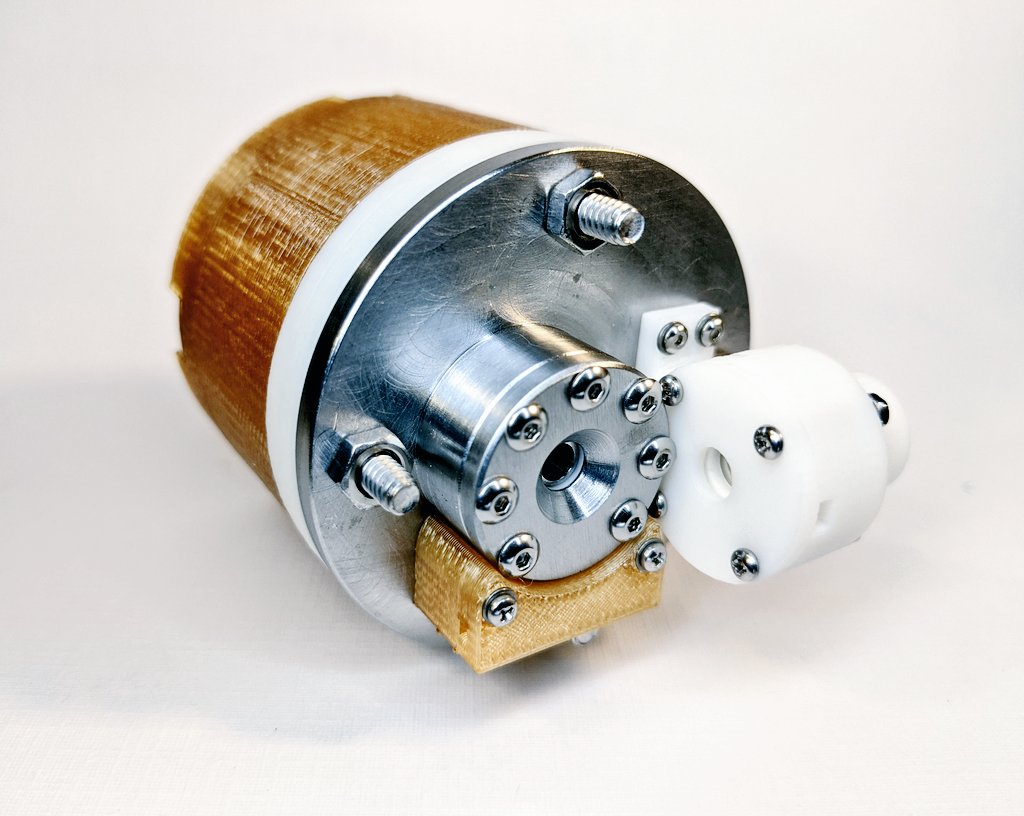
For the first tests I will most likely be leveraging a 1000V, 9W supply due to the unknowns in this first ignition. Higher voltage (giving lower current) will reduce thrust by a lot, but ISP will increase, and higher voltage gives me more leverage for establishing a stable discharge. Since the EHT1 design uses a much narrower and steeper anode with smaller diameter outer pole piece, I could also reasonably expect beam divergence to be lower than the typical 45 degrees or more HWHM seen on much wider end-Hall sources for surface processing
However, given the imposed power limits on the system, I expect the EHT1 to really max out at maybe a bit more than 100uN of thrust for the absolute max 20W total system power.
Now, how does this compare with the AHT1? If we take the same assumptions stated above for the Adamantane ion beam, this time factoring in 80-90% ion beam conversion efficiency, and now 15 degree HWHM divergence, we can show that at equivalent power, I can achieve 4x the thrust! So even at the highest voltage of 1kV and lowest current at 9mA, I can still hit my 100uN target. Going down to the lowest voltage of 300V range at 9W discharge power, this will allow me to hit a peak of 500uN for ~20W total system power!
Note these numbers still make a lot of assumptions, but is in agreement with what has been observed at lower power scaling for Hall. Note that in either case, while ISP is very hard to predict, I would be comfortable estimating in the 500-1000s range on average to start.
Another benefit is that both systems will use the same exact power, control, fuel, hardware, and mounting, at the same size. Thrust and ISP can be balanced and selected simply by changing the main discharge power supply for higher voltage/lower current and visa-versa.
Now, given the large thrust efficiency losses and the fact that literally no one is pursuing end-Hall thrusters, why continue? For one thing, the end-Hall design is about as simple as you can get, and is already a robust ion source in industry often used with reactive gases. While my gut feeling was to originally start with anode-layer (with the original and now obsolete AIS-ALIT1 concept design months before) I couldn’t solve the scaling and anode feed challenges to make it a reality until after I did the design for the EHT1, which was then applied to the newer AHT1
While the EHT1 will most likely perform less than expected, the AHT1 is expected to perform better than anticipated. Both options will still be developed concurrently, offering two flavors of low-power, low-cost Hall thrusters, and providing some unique data for the field.
- Gallimore, A., Reichenbacher, M., Marrese, C., Kim, S.-W., & Foster, J. (1994). Preliminary characterization of a low power end-Hall thruster. 30th Joint Propulsion Conference and Exhibit. doi:10.2514/6.1994-3012

